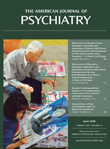Diagnosis of Comorbid Psychiatric Disorders in Substance Users Assessed With the Psychiatric Research Interview for Substance and Mental Disorders for DSM-IV
Abstract
Objective: The authors used the Psychiatric Research Interview for Substance and Mental Disorders for DSM-IV (PRISM-IV) to test the reliability of DSM-IV-defined disorders, including primary and substance-induced disorders, in substance-abusing subjects. Method: Substance-abusing patients (N=285) from substance abuse/dual-diagnosis treatment settings and mental health treatment settings participated in test and blind retest interviews with the PRISM-IV, which includes specific guidelines for assessment of substance abusers. Results: Kappas for primary and substance-induced major depressive disorder ranged from 0.66 to 0.75. Reliability for psychotic disorders, eating disorders, antisocial personality disorder, and borderline personality disorder was in the same range. Reliability for most anxiety disorders was lower. Reliability was good to excellent (kappas ≥0.65) for most substance dependence disorders. Continuous measures (severity, age at onset) had intraclass correlation coefficients >0.70 with few exceptions. Reliability was better for primary than for substance-induced disorders, although not greatly so. Conclusion: Most DSM-IV psychiatric disorders can be assessed in substance-abusing subjects with acceptable to excellent reliability by using specifically designed procedures. Good reliability improves the likelihood of significant study results.



